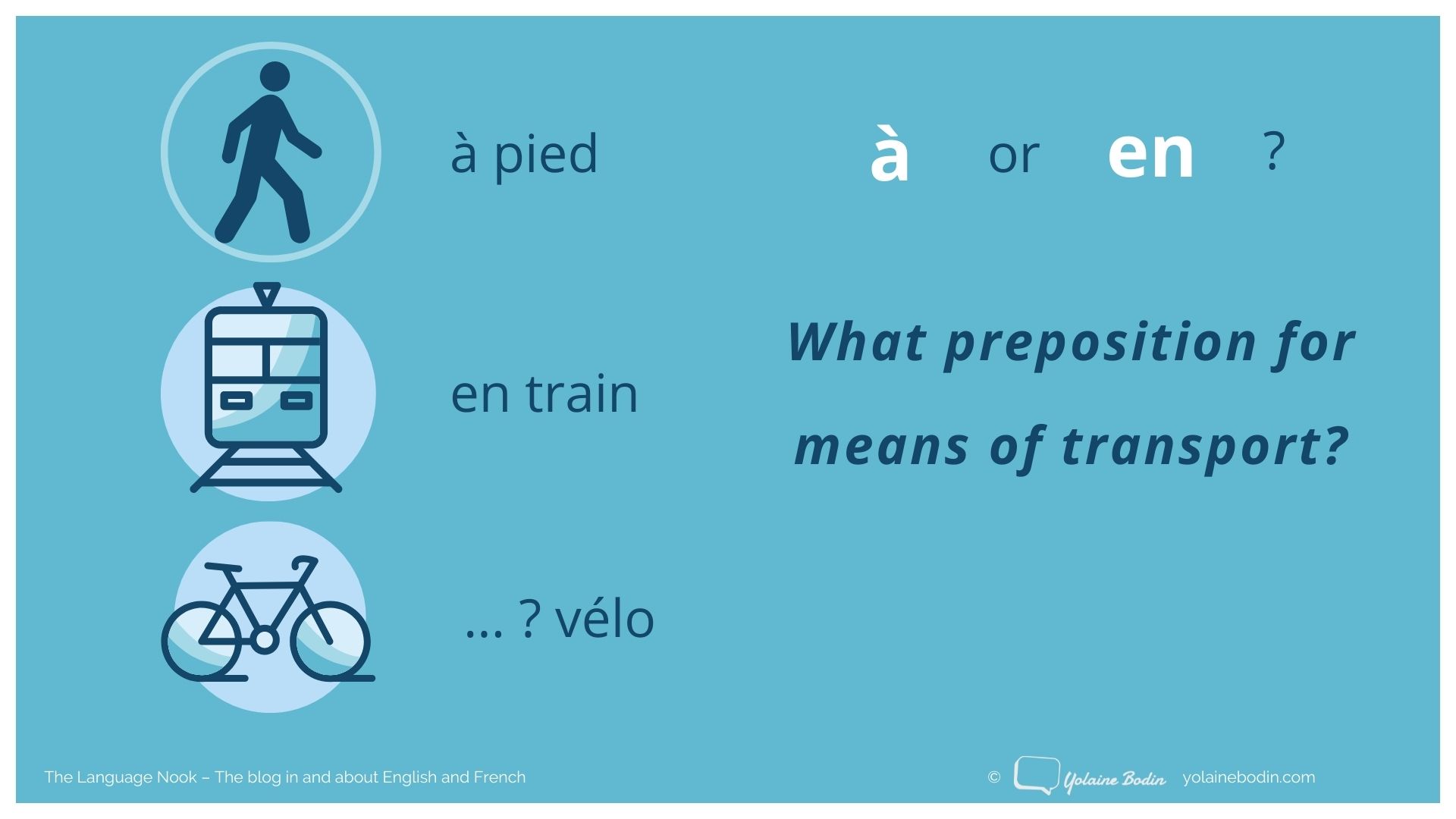In French, when talking about means of transport, you have the choice between two prepositions: à and en. The question is, when should you use à and when should you use en?
This is the explanation I give in my French classes:
Use the preposition “en” when you want to say what type of vehicle you will use to travel: a car, a bus, a tram, a train, a plane, but also a boat, a helicopter, a sledge, a sleigh.
With “en” the focus is on the means of transport –i.e. vehicle– itself.
Look at this list of examples:
en voiture, en bus, en tram, en train, en avion, en bateau, en hélicoptère, en luge, en traîneau
The preposition “à” is used to focus on the physical movement or activity such as walking, riding, skiing, swimming.
Look at these examples:
à pied, à vélo, à cheval, à moto, à ski, à la nage, à dos d’éléphant
Another way to think about it and an explanation you will easily find in many book on the French language is to say that you use “en” when you can enter the vehicle, be inside the means of transport, and you use “à” when you are on top of the means of transport, for example when you ride it.
This is a complementary explanation that can also help.
Careful! It is important to bear in mind that every language changes with time and the French language is no exception. There is a noticeable trend to use “en” more and more for some means of transport, but, of course not all of them – it would be too easy if it were the case! 😉
Nowadays you often hear:
En vélo (rather than à vélo) → this can be explained easily if you consider the focus is on the bicycle as a type of vehicle rather than the physical activity –riding– that helps you go from one place to another.
The same is true for phrases like en ski, en planche à voile (instead of à ski, à planche à voile)
It is clear that you will hear many French people say en vélo for example.
Be aware that purists consider this usage incorrect, so it may be wise to stick to the first rule I explained above and keep saying à vélo.
There you are! You now know what preposition to use with means of transport. Congratulations! 🙂





Thanks big time yolaine
your a life saver
Glad I could help, Zamrah 🙂
Your explanations are brilliant. Clear and concise. The lesson on countries (feminine/masculine/ prepositions) was very helpful.
Thanks for sharing
Thank you ever so much for your wonderful comments Miriam. I am delighted to hear you found the explanations in this post clear and the lessons on the gender of countries in French and which prepositions to use helpful. 🙂